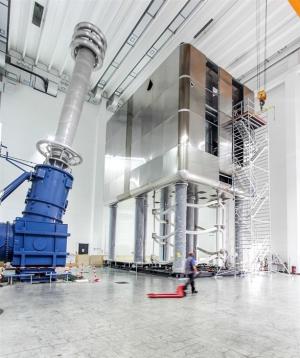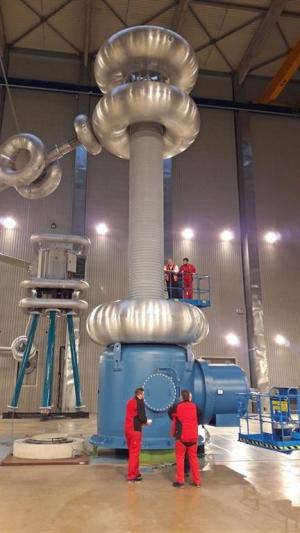Europe delivers first-of-a-kind equipment
Tullio Bonicelli, in charge of Europe's contributions to the ITER neutral beam heating system, calls them "beyond state-of-the-art components." The high voltage deck and bushing assembly for ITER's prototype neutral beam injector have been installed at the Neutral Beam Test Facility* in Padua, Italy.
At the test facility for ITER's most powerful heating system, two separate development projects are underway: SPIDER, to characterize the high-energy negative ion source of neutral beam heating, and MITICA, a full-size prototype of the 1 MV beam injectors.
All assembly and testing activities on the equipment have been completed.



